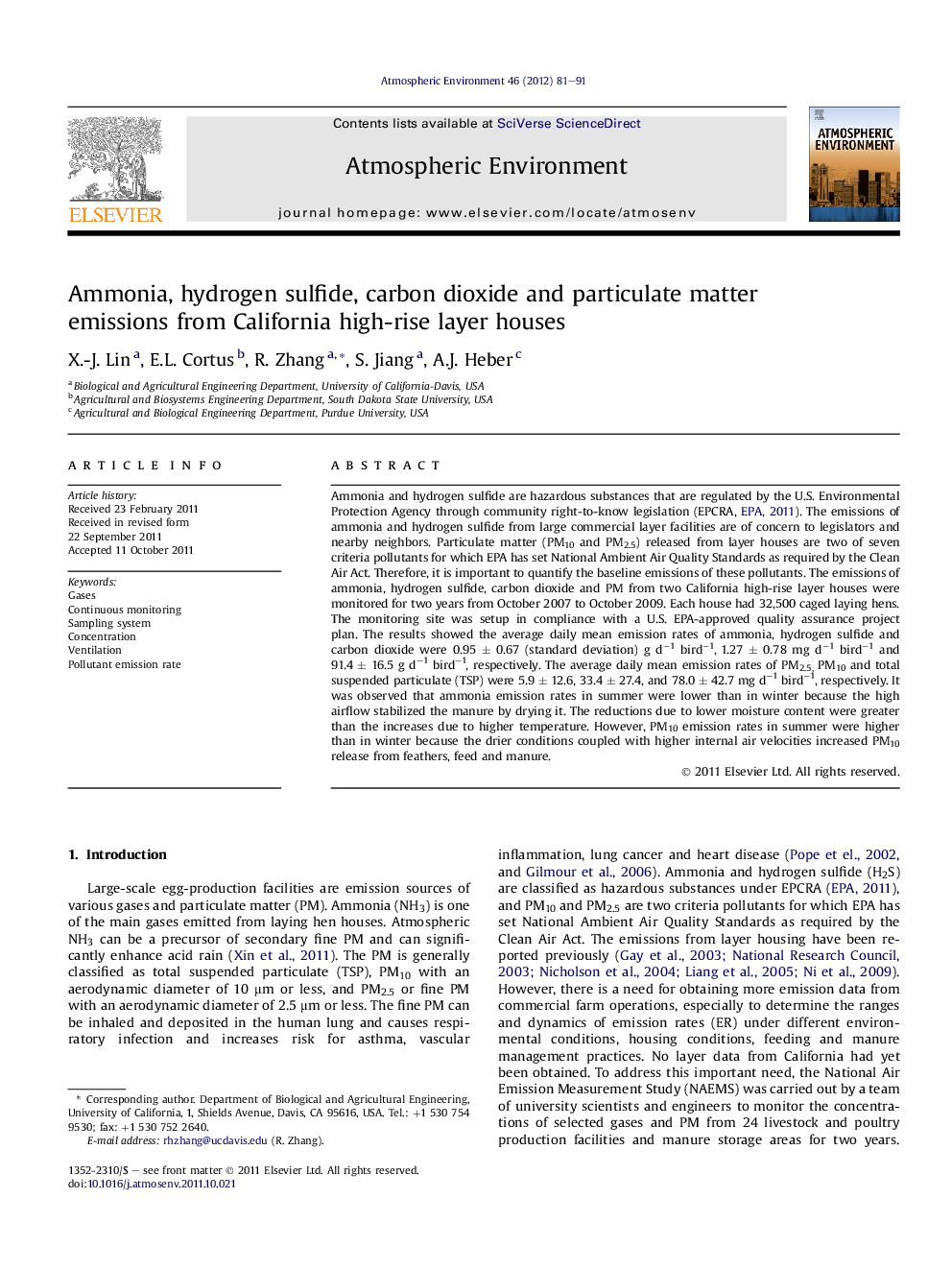| Article ID | Journal | Published Year | Pages | File Type |
|---|---|---|---|---|
| 4439241 | Atmospheric Environment | 2012 | 11 Pages |
Ammonia and hydrogen sulfide are hazardous substances that are regulated by the U.S. Environmental Protection Agency through community right-to-know legislation (EPCRA, EPA, 2011). The emissions of ammonia and hydrogen sulfide from large commercial layer facilities are of concern to legislators and nearby neighbors. Particulate matter (PM10 and PM2.5) released from layer houses are two of seven criteria pollutants for which EPA has set National Ambient Air Quality Standards as required by the Clean Air Act. Therefore, it is important to quantify the baseline emissions of these pollutants. The emissions of ammonia, hydrogen sulfide, carbon dioxide and PM from two California high-rise layer houses were monitored for two years from October 2007 to October 2009. Each house had 32,500 caged laying hens. The monitoring site was setup in compliance with a U.S. EPA-approved quality assurance project plan. The results showed the average daily mean emission rates of ammonia, hydrogen sulfide and carbon dioxide were 0.95 ± 0.67 (standard deviation) g d−1 bird−1, 1.27 ± 0.78 mg d−1 bird−1 and 91.4 ± 16.5 g d−1 bird−1, respectively. The average daily mean emission rates of PM2.5, PM10 and total suspended particulate (TSP) were 5.9 ± 12.6, 33.4 ± 27.4, and 78.0 ± 42.7 mg d−1 bird−1, respectively. It was observed that ammonia emission rates in summer were lower than in winter because the high airflow stabilized the manure by drying it. The reductions due to lower moisture content were greater than the increases due to higher temperature. However, PM10 emission rates in summer were higher than in winter because the drier conditions coupled with higher internal air velocities increased PM10 release from feathers, feed and manure.
► The pollutants from two layer houses were continuously monitored for two years. ► Emission rate of ammonia was 0.95 g d−1 bird−1. ► Emission rate of PM10 was 33.4 mg d−1 bird−1. ► Ammonia emission rates in summer were lower than in winter. ► PM10 emission rates in summer were higher than in winter.
